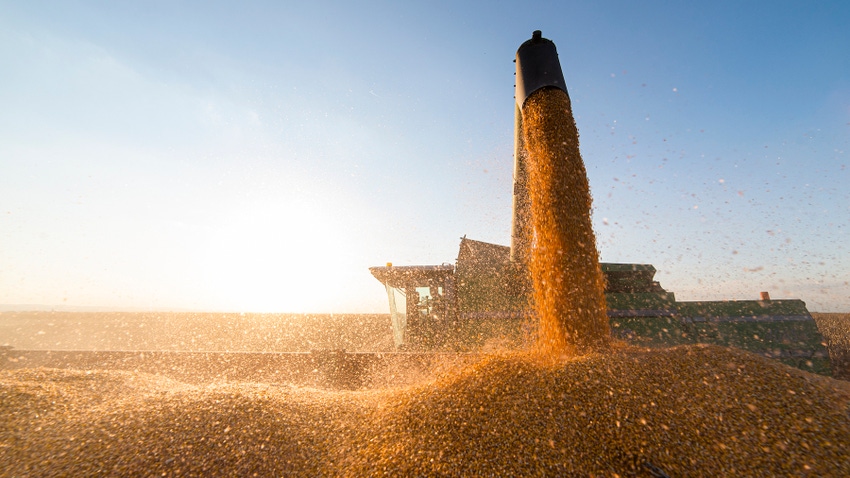
“Hottest summer on record,” blared headlines last week, just after a blistering end to August in much of the Midwest punished crop ratings for corn and soybeans.
But history suggests lower yields from USDA’s Sept. 12 production estimates are anything but a done deal. That’s especially true for soybeans, which, in theory at least, should have been most affected by the late heat wave.
Both crops do show a small tendency for lower yields from the government, though not nearly large enough to be statistically significant. Still, models I use to predict yields show increased soybean production, while pointing to a wide range of potential outcomes for corn. And in any case, these September readings could soon be lost in the dust from combines out in the field.
This production uncertainty, not to mention a cloudy demand outlook, makes marketing decisions difficult, to say the least.
Analysts polled by wire services were nearly unanimous in predicting yield cuts from USDA, with most also seeing lower projected ending stocks for the 2023 marketing year that began Sept. 1. If confirmed by the agency, growers could get a shot at selling for higher prices at harvest, and perhaps beyond. Otherwise, a bearish surprise could wait for those with bushels still to price.
The range of potential outcomes is large. Average cash soybean price projections for the crop in these different scenarios runs from $10.50 to $14.25 a bushel, with corn from $3 to $5.45. Depending on costs and yields, that’s the difference between breaking even or bleeding red ink.
So here’s a look at how the numbers could shake out soon.
Soybean shakedown
Analysts surveyed by Reuters forecast soybean yields in a fairly tight range from 49.6 to 51 bushels per acre, with an average of 50.2 bpa. The methods I use – crop ratings, the Vegetation Health Index and summer weather are spread from 50.9 to 52.5 bpa. A multiple regression analysis of all these factors is also at 50.9 bpa, the same as USDA printed in August, which historically has the closest relationship to September, though the crop ratings and the multiple regression mashup are close.
Now, anyone trying to forecast prices faces two worlds: One, where markets behave the way theory says they should, and another where chaos reigns. Which version rules the 2023 marketing year is as unknown as who will win the Super Bowl in February.
While the market focuses on yields right now, a perfect world of supply and demand indicates these production differences this late in the growing season won’t be enough to affect prices tremendously.
But smaller crops mandate higher prices, don’t they? Well, not if demand adjusts to keep projected supplies at the end of the marketing year from wild swings, regardless of how many bushels U.S. farmers grow.
This version of the real world says soybean demand adjusts to whatever reality it faces. Both crush and exports grow with larger crops while shrinking if the bushels aren’t there to sell. In this reality, global soybean demand is fairly constant, and South American producers have plenty to sell if the U.S. doesn’t. U.S. cash prices could average from $10.80 to $11.20, well below the cost of production.
History, of course, especially recent history, suggests demand surprises can disrupt the perfect world of theory. Chinese demand, often the lynchpin of consumption, is expected to slip from last year’s level. What happens if it doesn’t, or crumbles under the weight of slow growth or a new trade war? And if South American production suffers, U.S. exports could be better than forecast too.
Dialing in these variances into the price models results in a far greater range of potential outcomes. Potential futures selling ranges run all the way from $12 to $18 – in other words, the trading band for the past two years!
Corn confusion
Analysts surveyed by Reuters all saw at least a minor reduction from USDA’s August yields, with the average at 173.5 bpa, in a fairly tight range from 171.5 to 175 bpa. By contrast, my methods showed more variation, from 167.4 to 180.9 bpa.
As with soybeans, USDA’s August expectation is the most reliable predictor of September’s official estimate, but both the high and low end of this year’s models also performed well historically.
Predicting corn demand has more moving parts than soybeans, with demand for ethanol, livestock feeding and exports all subject to price rationing, at times at least. Assuming demand consistent with USDA’s August estimates, varying production with my wide range of yields translates into average cash prices from $3 to $5.45 with futures price selling ranges from $3.25 to $7 – talk about boom or bust!
Yet factoring typical demand rationing narrows those swings a lot: Average cash prices from $3.40 to $4.60, with a futures selling range from $3.75 to $5.70.
Without better costs, basis or yields that are better than average, finding a profitable corn bid now looks tough, with December futures closing Friday at $4.8375.
Soybeans offer a better shot, unless November futures suffers a large post-report meltdown from its Friday close at $13.63. It’s not a great hand to play, but it may be the one the market deals.
About the Author(s)
You May Also Like






